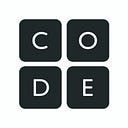We work with data on the daily from all kinds of sources here at Code.org, but sometimes the most interesting information is sitting right under our noses.
The Code.org CS Principles curriculum contains a number of in-course assessments that students take throughout the year, and as a result the course provides a rich data set we can use to help gain insights into how students and teachers learn and teach CS. Code.org CSP is taught in around 1,700 high schools across the country and more than 45,000 students took the course last year.
After anonymizing and aggregating the data set, we dug into the numbers to see what we could learn. We’re also making the dataset available publicly, we’d welcome any researchers who would like to dig in and help us learn more:
1.Students tended to score higher on in-course assessments in classrooms with older teachers. Who says computer science is only for the young? It didn’t surprise us to see that more experienced teachers have more successful classrooms, but since most of our teachers are new to teaching CS, if someone tells you they’re too old to teach CS, encourage them to give it a try!
NOTE: The sample size here is small because (1) we only ask teachers in our professional development program for their age and (2) we didn’t start asking for this data as part of the PD application application process until 2018.
2. Teachers who went through the Code.org Professional Development Program perform almost as well as other CS teachers.
At first blush you might think that students of teachers who have completed our Professional Development should perform above those who have not, but that’s forgetting to take into account that 58% teachers in our Professional Development program are largely new to teaching computer science. While we don’t have background data on teachers who pick up the curriculum and use the assessments on their own (without PD), those we hear from tend to be more experienced computer science teachers hunting around for resources. Most already teach AP CS A or another CS course and are expanding CS at their school with CS Principles. This suggests that our curriculum, with a relatively small dosage of Professional Development, can help new teachers achieve similar results to experienced teachers.
3. Teachers in rural schools see very little difference in assessment results versus non-rural teachers.
Despite challenges such as teaching more subjects and less reliable internet access, we don’t see a meaningful difference in assessment results for rural teachers.
Want to dig in further? Help us learn more — we’re interested in your findings. We’re inviting you to check out this dataset, which contains some aggregated and anonymized data about student performance on in-course assessments in our AP CS Principles course from the 2017–18 school year. If you would like to see more or other data, please contact research@code.org to ask about our research partnerships.
-Alice Steinglass, Code.org President
Note: The dataset contains demographic data about students, their teachers and their schools, including self-reported race, and gender, % of school eligible for free and reduced lunch, and more. The set contains data from a total of 798 teachers and 19,883 students who used a substantial portion of assessments the 2017–18 school year — in other words, students who likely they went through all or most of the course.
